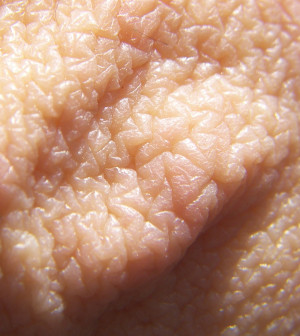- Understanding the Connection Between Anxiety and Depression
- How Daily Prunes Can Influence Cholesterol and Inflammation
- When to Take B12 for Better Absorption and Energy
- Epsom Salts: Health Benefits and Uses
- See What Saffron Can Do for Sleep and Heart Health
- 6 Common Mistakes to Avoid Before Your Physical
- Can Sweating Really Help You Beat a Cold?
- Strengthening Your Relationship: Practical Strategies
- Skip Storing This Everyday Product in the Fridge Door
- Green Tea + B3 Pairing May Boost Brain Health
Skin Cancer Prevention Tips


One in five Americans will develop skin cancer at some point in their lives, making it the most common type of cancer in the nation.
However, skin cancer is also one of the most preventable types of cancer, according to Dr. Mark Lebwhol, professor of dermatology at the Icahn School of Medicine at Mount Sinai Health System in New York City and president-elect of the American Academy of Dermatology.
“Fortunately, most skin cancers, even melanoma, can be cured and treated when detected early,” he said in a Mount Sinai news release. “Knowing your own skin is the key to discovering skin cancer early on. See a dermatologist for a skin check if you notice a spot, mole or lump on your body that is changing, growing or bleeding.”
Lebwohl also offered the following skin cancer prevention tips:
Apply sunscreen with an SPF of 30 or more to all areas of exposed skin every day throughout the year. Re-apply about every two hours, even on cloudy days.
Wear protective clothing — long-sleeved shirt and pants, wide-brimmed hat and sunglasses — whenever possible. Never sunbathe and never use tanning beds.
Get an annual skin checkup from a doctor and do skin self-checks every month to keep track of your brown spots and freckles. If you have a lot of brown spots, you might consider total body photography. This will provide your doctor with a photographic record of your moles and make it easier to spot any potentially dangerous changes.
When checking your moles, keep in mind the ABCDEs. Alert your doctor if you find:
- Asymmetry, where one half of the mole is different than the other half.
- Borders that are irregular, scalloped or poorly defined.
- Color variations between areas of the mole, with shades of tan and brown, black, white, red or blue.
- Diameters that that are the size of a pencil eraser (6 millimeters) or larger. However, be aware that some melanomas can be smaller.
- Evolving, when a mole appears different from the rest or is changing in size, shape and color.
More information
The U.S. National Cancer Institute has more about skin cancer prevention.
Source: HealthDay
Copyright © 2026 HealthDay. All rights reserved.










